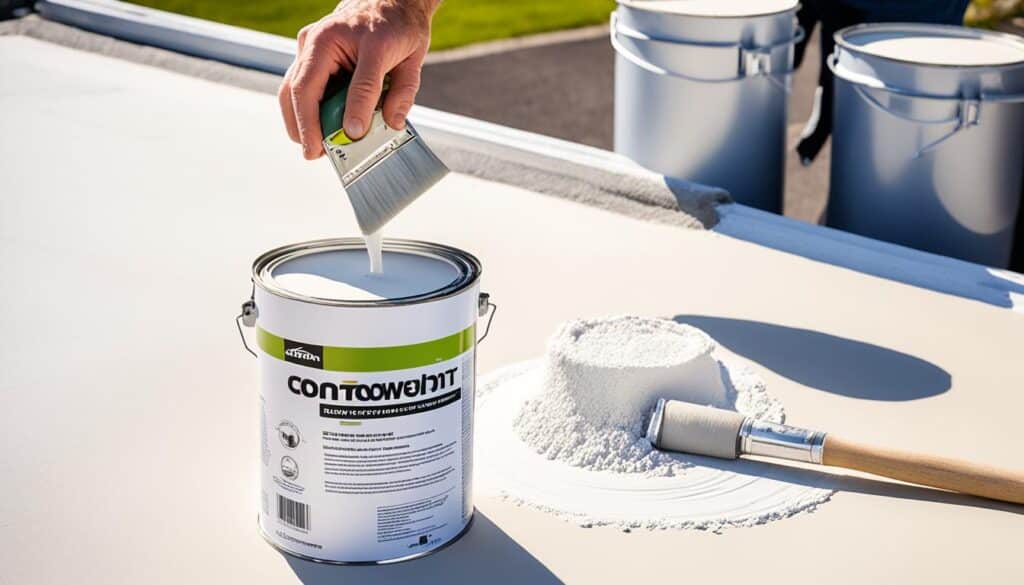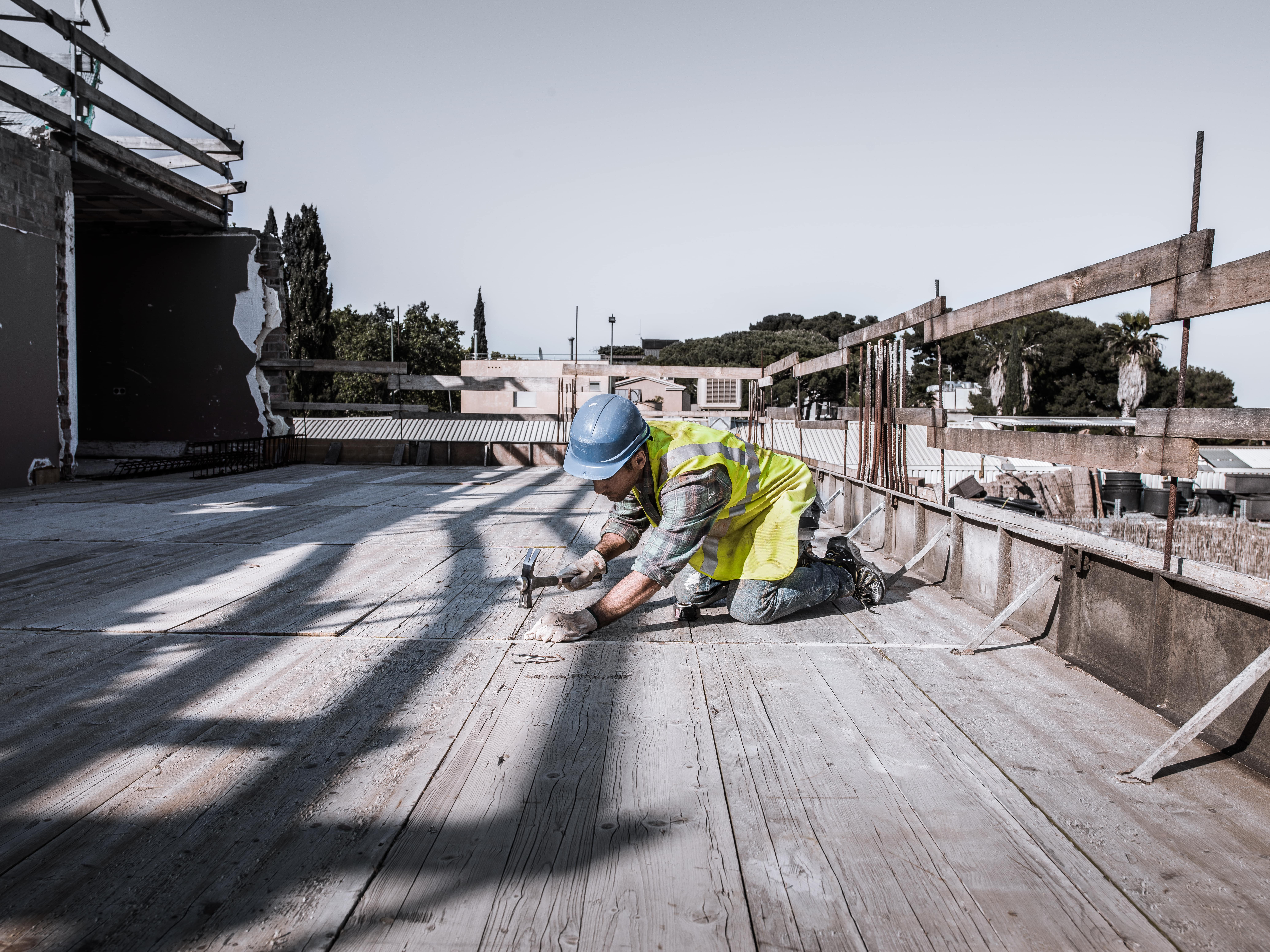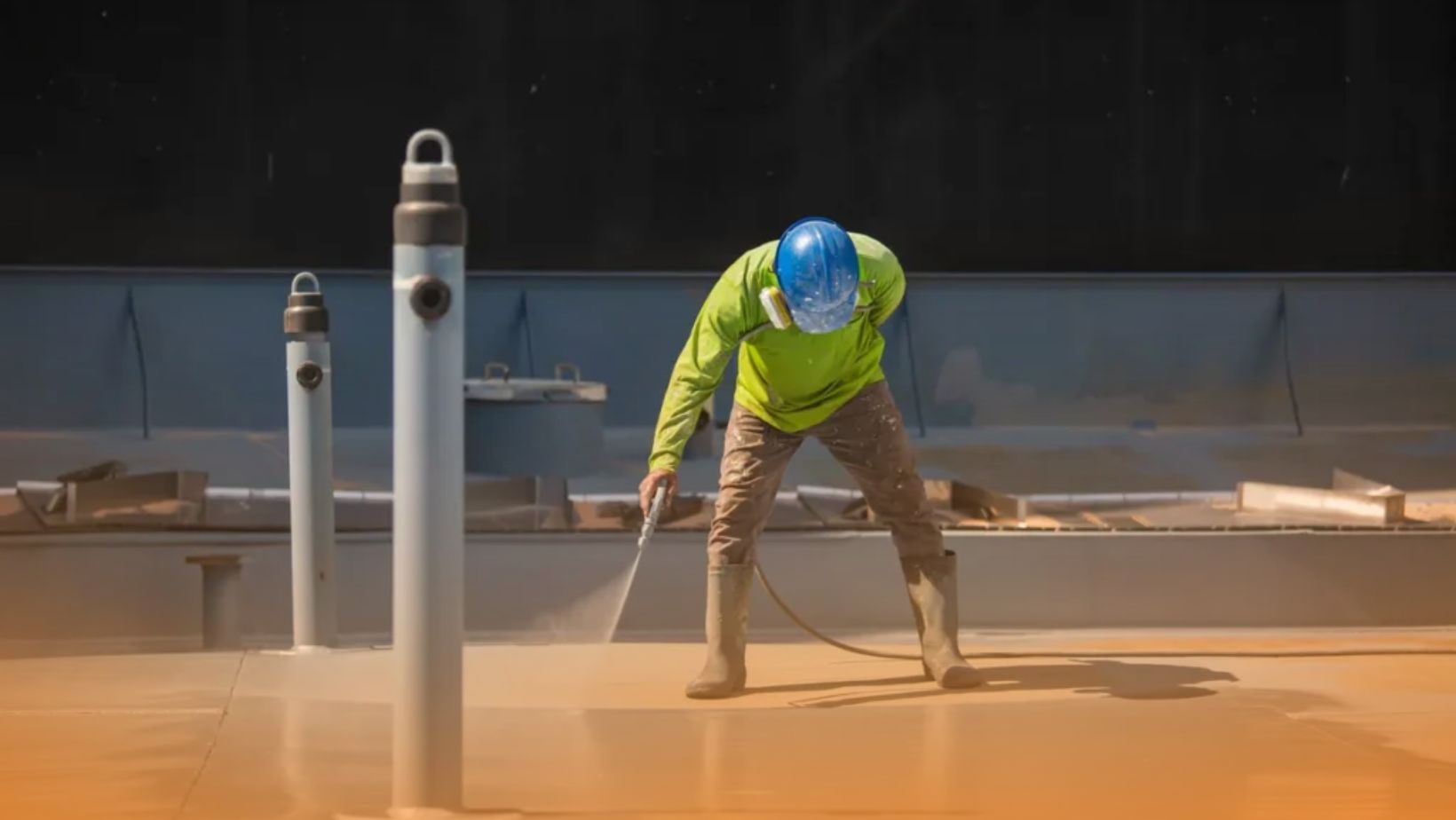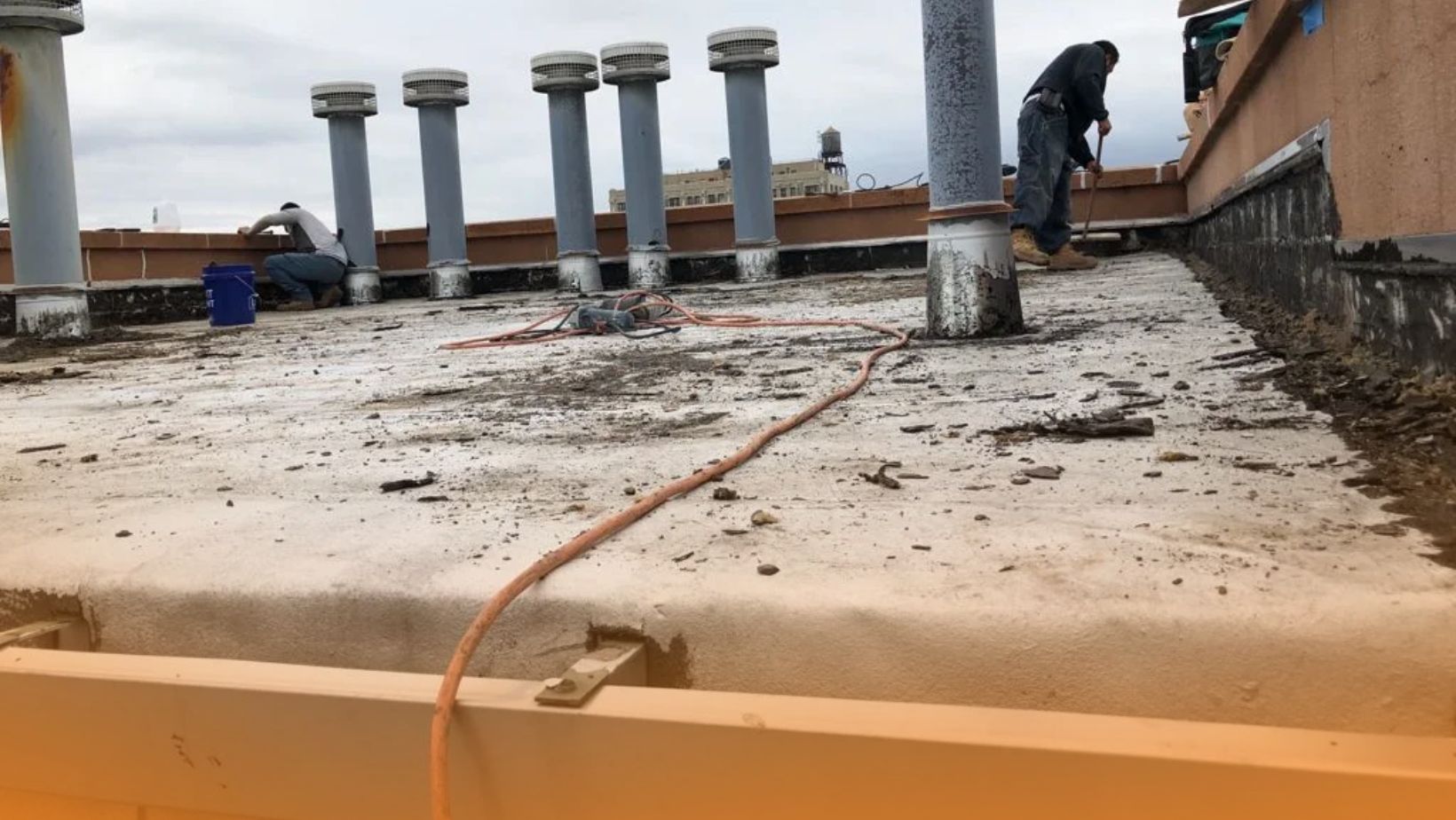When we think about roof maintenance and overall durability, we often overlook the initial step of laying the foundation – the application of reliable roof coating primers. The role of these primers, including SmartSeal, in ensuring a long-lasting and durable roof coating cannot be underestimated. They prepare and seal the roofing material to form a resilient surface that is ready to bond effectively with the main roof coating.
Whether it’s metal flashings, concrete decking, or gypsum boards, primers work wonderfully in prepping the terrain for coating. The type of primer chosen usually depends on the roofing material and existing conditions, hence the need for durable roof coating primers that can handle different scenarios.
The trust in these primers stems from their hard-wearing formulations designed to stand up to constant weather variations and the physical demands of the roof. They lay the groundwork for resilient roofing systems, enabling us to breathe easy knowing our roofs are in good hands. Hence, choosing the right primer is as crucial as selecting the main roof coating itself.
Key Takeaways
- Roof coating primers serve as a base layer that prepares and seals the roof substrate for the main coating.
- The application of a primer enhances the durability and resilience of the roof coating.
- Primers are formulated to suit various roofing materials and conditions.
- Investing in a reliable, long-lasting roof coating primer can provide long-term benefits.
- The type of primer selected depends on the roofing material and the existing conditions.
- Primers contribute to the overall performance and lifespan of roofing systems.
Understanding Roof Coating Primers and Their Significance
Roof coating primers are essential in safeguarding your roof’s longevity and performance. They serve as preparatory agents that promote the strong adhesion of roof coatings to varied substrates. With their low viscosity and quick wetting properties, they create a receptive surface for roof coatings, effectively acting as the link between your roof surface and the coating. This pivotal role makes the choice of top roof coating primers crucial in roofing projects.
The Basics of Roof Coating Primers
Understanding the versatility and complexity of roof coating primers is necessary as they are not a one-size-fits-all solution. Their formulation addresses the specific needs of the substrate, using varying combinations of binders and solvents. From economical roof coating primers to high-quality specialty ones, these products cater to diverse roofing conditions and materials. Selecting the best roof coating primers involves a thorough evaluation of the substrate and environmental conditions.
Key Advantages of Primer Application
The advantages of primer application extend beyond creating a conducive surface for roof coatings. Primers represent an economical choice as they can result in long-term savings. Trusted roof coating primers are created to be easy to apply, reducing labor and time costs. Furthermore, the effective use of primers can extend the roof’s performance life, as they contribute to the improved adhesion of roof coatings, reducing the likelihood of premature coating failures and associated repair costs.

How Primers Enhance Roof Coating Performance
Undoubtedly, primers are performance-enhancing agents contributing substantially to roof coating efficiency. They ensure stronger adhesion to the roofing substrate, which acts as a defense against common issues such as flashing rust and staining from bitumen roofs. The application of a suitable primer can render a surface more uniform and receptive to the coating, increasing the efficacy and overall performance of the roof coating system.
The right roof coating primer can make the difference between a roof that ages gracefully and one that requires costly and frequent repairs.
In conclusion, your roof’s resilience and longevity are greatly influenced by the choice of roof coating primers. Understanding their significance, using trusted brands, and incorporating them effectively in your roofing project can yield lasting benefits, including improved roof performance, durability, and potential savings.
Types of Roof Coating Primers and Their Formulations
When it comes to roof coating primers, there is quite a variety to choose from. These primers are formulated to suit different substrates and conditions, ensuring each has the ideal primer for maximum durability. In our quest to gain a deeper understanding of roof coating primers, we will examine some common types and their formulations.
Roof coating primers are available in different types, each with its unique formula to suit certain roofing substrates and environmental conditions. From damp surfaces, rust-prone metal roofs, to tacky bitumen roofs, there’s certainly a primer for every situation.
Three main categories of roof coating primers are commonly considered for various roofing applications.
- Water-Based Asphalt Primers
- Rust Inhibitive Primers
- Bleed-Blocking Primers
Remember, a well-chosen primer has the power to significantly increase the longevity and effectiveness of your roof coating. Thus, we can’t overstate the importance of understanding these three main types of primers and their specific applications.
Let’s take a closer look at these three kinds of primers:
| Type of Primer | Best Suited Substrate | Key Function |
|---|---|---|
| Water-Based Asphalt Primers | Damp Surfaces | Prepares damp surfaces for roof coating application |
| Rust Inhibitive Primers | Metal Roofs | Prevents rust and prepares the metal roof for coating |
| Bleed-Blocking Primers | Bitumen Roofs | Prevents discoloration on white elastomeric coatings from bitumen “bleed-through” |
To sum it up, irrespective of your roof type and its unique requirements, there’s a roof coating primer out there ready to create the perfect base for your roof coating system. By understanding the different primers and their properties, you can choose the one that will enhance the longevity of your roof coating.

Determining When a Roof Coating Primer is Necessary
Contrary to popular belief, not all roofing conditions require the application of primers, for instance, some silicone roof coatings can adhere directly to the substrate without the need for primers. However, while this may be true for certain situations, it’s not a one-size-fits-all scenario. There are instances where roof coating primers are key to achieving a durable and long-lasting roof system. But how do you discern when a roof coating primer is necessary? Let’s take a closer look.
Identifying Roof Conditions that Require Primers
Roofing situations are diverse and each demands a unique approach. Some substrates have unique properties that make them require primers for optimal adhesion. Metal roofs can be an example of such a situation. Given their susceptibility to oxidation, a specialized primer may be necessary to protect the metal and provide a sturdy base for the roof coating to adhere.
The process of roofing substrate priming is a crucial step when working with porous or uneven surfaces. By filling in gaps and smoothening out inconsistencies on the substrate, the primer promotes a more uniform and receptive surface for the roof coating. Therefore, substrates such as concrete or weathered bitumen may greatly benefit from priming before coating.
Utilizing Manufacturer’s Guidelines for Primer Use
When in doubt, always refer to the manufacturer’s guidelines. These resources are valuable in determining the necessity of a primer for specific roofing substrate and coating types. Although some coatings might not explicitly require a primer, the manufacturer might recommend one for added longevity and improved performance.
Remember, necessary roof coating primers are more than just a preparatory layer. These products, when used as directed by the manufacturer, ensure the correct bonding is achieved for optimal performance. Primers also protect the roof substrate from damage and prolong the life span of your roof coating.
In conclusion, take the time to understand the roofing condition and substrate you’re working with and consult the manufacturer guidelines for roof coating primers before making a decision. The initial time and financial investment in a trusted roof coating primer could save significant time and money in the long run.
Conclusion
By carefully considering the best roof coating primers and applying them judiciously, we can play a crucial role in ensuring the longevity and effectiveness of roof coatings. An understanding of different primer types, their unique benefits, and proper application processes allows us to provide optimal surface preparation and coating adhesion. These tasks are not just labor-intensive – they demand a certain finesse rooted in years of experience and in-depth knowledge of materials and surfaces.
Considering environmental factors is also a key component of our roof-coating process. By adhering to industry standards, complying with VOC regulations, and taking the product’s environmental impact into account, we promote ensuring roof protection that aligns with sustainability goals. Conscious of the role we play in preserving our planet, we prioritize eco-friendly solutions, ensuring the health and safety of both our crew and the building’s occupants.
At the end of the day, remember that the proper application of roof coating primers goes beyond the individual task at hand. It’s about setting the stage for superior protection, ensuring your roof stands the test of time. Armed with the right knowledge and tools, we not only prime your roof effectively, but create a dependable roofing solution that contributes to the value of your property, the comfort of building occupants, and the health of our shared environment. That, to us, is a job well done.
SmartSeal leads the way for exceptional commercial roof coating in Minneola, FL. Reach out now to begin your project with us.
FAQs
What is the Role of Primers in Roof Coatings?
Primers in roof coatings serve as preparatory agents that promote the adhesion of roof coatings, ensuring stronger adhesion to the roofing substrate and preventing common issues such as flashing rust and staining from bitumen roofs. By preparing surfaces for the roof coating application, durable roof coating primers set the stage for a robust roofing system and play a key role in ensuring the longevity and effectiveness of roof coatings.
What are the Key Advantages of Primer Application?
The application of reliable roof coating primers offers advantages such as economic savings, ease of application, and the extension of the roof’s performance life. With low viscosity and quick wetting qualities, primers create a receptive surface for roof coatings, contributing to the proven performance of roof coatings by improving adhesion and helping to extend the longevity of the completed roof system.
What Types of Roof Coating Primers are Available and How are They Formulated?
Roof coating primers come in a variety of types tailored to specific substrates and conditions. These include water-based asphalt primers suitable for damp surfaces, rust inhibitive primers specifically for metal roofs, and bleed-blocking primers to prevent discoloration on white elastomeric coatings. Each primer type is carefully formulated to address the specific needs of the substrate it is designed for.
Why Is Surface Preparation Important for Primer Efficacy?
Proper surface preparation is critical for the efficacy of primer application. A clean, dry surface free from frost, snow, and ice is necessary before applying roof coating primers. By ensuring a suitable surface for the primer, effective adhesion can be achieved, resulting in a stronger, more durable roofing system.
How Do I Determine When a Roof Coating Primer is Necessary?
Not all roofing conditions require the use of primers. However, certain substrates with unique properties such as metal roofs often do need specialized primers to ensure proper adhesion. The decision to use a primer should always be informed by the manufacturer’s guidelines, which consider the specific roofing substrate and coating type. These requirements help determine the necessity of a primer and ensure the correct product is used for optimal bonding and longevity.
Are there Specific Roof Coating Primers for Different Weather Conditions?
Yes, the best roof coating primers for different weather conditions include all-temperature products that accommodate climate variances as well as seasonal formulations tailored for specific environmental factors. Manufacturer advice assists with product selection and appropriate application techniques given the weather conditions.
How Do I Apply a Roof Coating Primer for Maximum Adhesion?
The application of roof coating primers must comply with the manufacturer’s instructions for maximum adhesion. This includes appropriate storage, maintaining correct temperature conditions, and curing times, which vary depending on weather conditions. Some roof coatings may also have special requirements related to air and surface temperatures or exposure to moisture.
How Can Investing in High-Quality Roof Coating Primers be Beneficial?
Investing in high-quality roof coating primers can lead to significant long-term savings by enhancing the performance and extending the life of the roof. Effective primers can reduce maintenance costs and avoid the need for frequent recoating or replacement of the roof system, making the initial cost of these primers a worthwhile investment.
What Environmental and Safety Considerations Should I Keep in Mind When Selecting a Primer?
When selecting roof coating primers, important environmental and safety considerations include VOC regulations and the product’s environmental impact. Low VOC roof coating primers that meet industry standards contribute to better air quality and can help projects comply with local regulations. Roofing professionals should consider eco-friendly and safety aspects when choosing primers to ensure compliance and protect occupant health.
What Support is Available For Professionals Applying Roof Coating Primers?
Manufacturers often provide resources and support to ensure the best application techniques for roof coating primers. Available resources may include data sheets, guidelines, direct consultations, and even regional support for complex roofing projects. These resources are designed to assist roofing professionals in achieving the best outcomes for their roofing endeavors.



